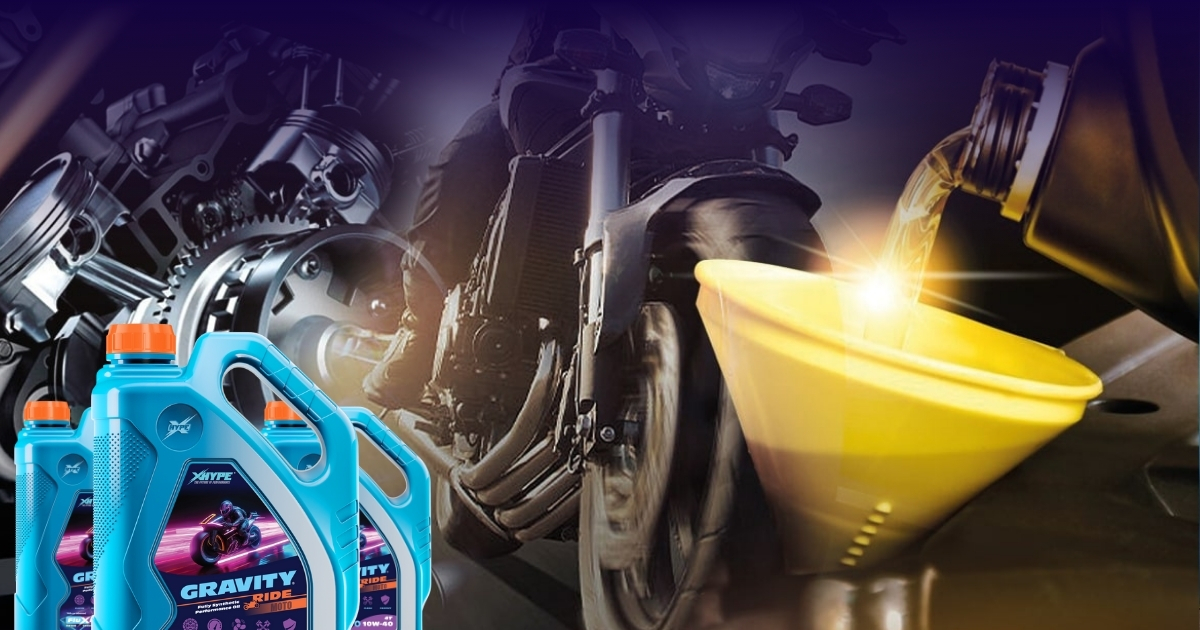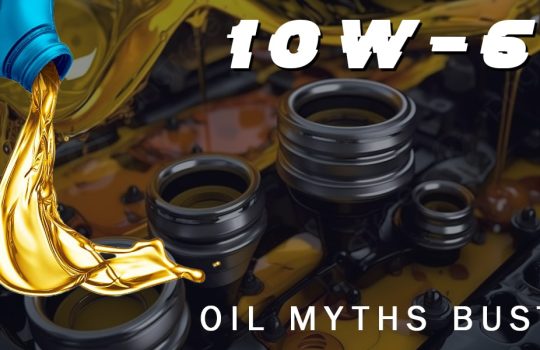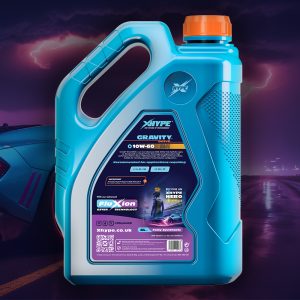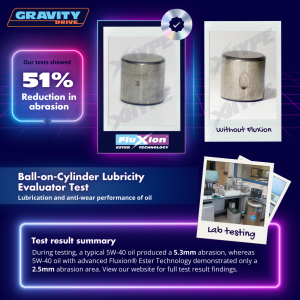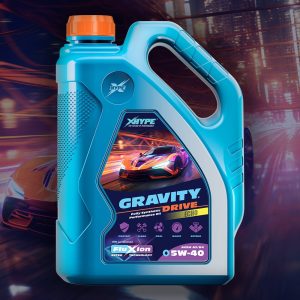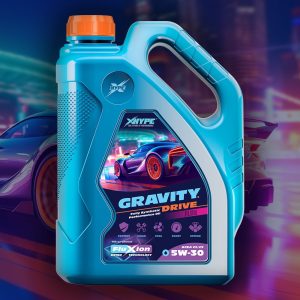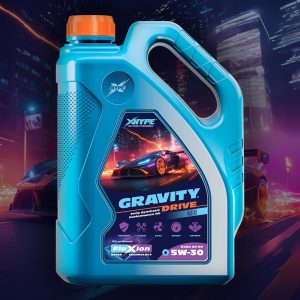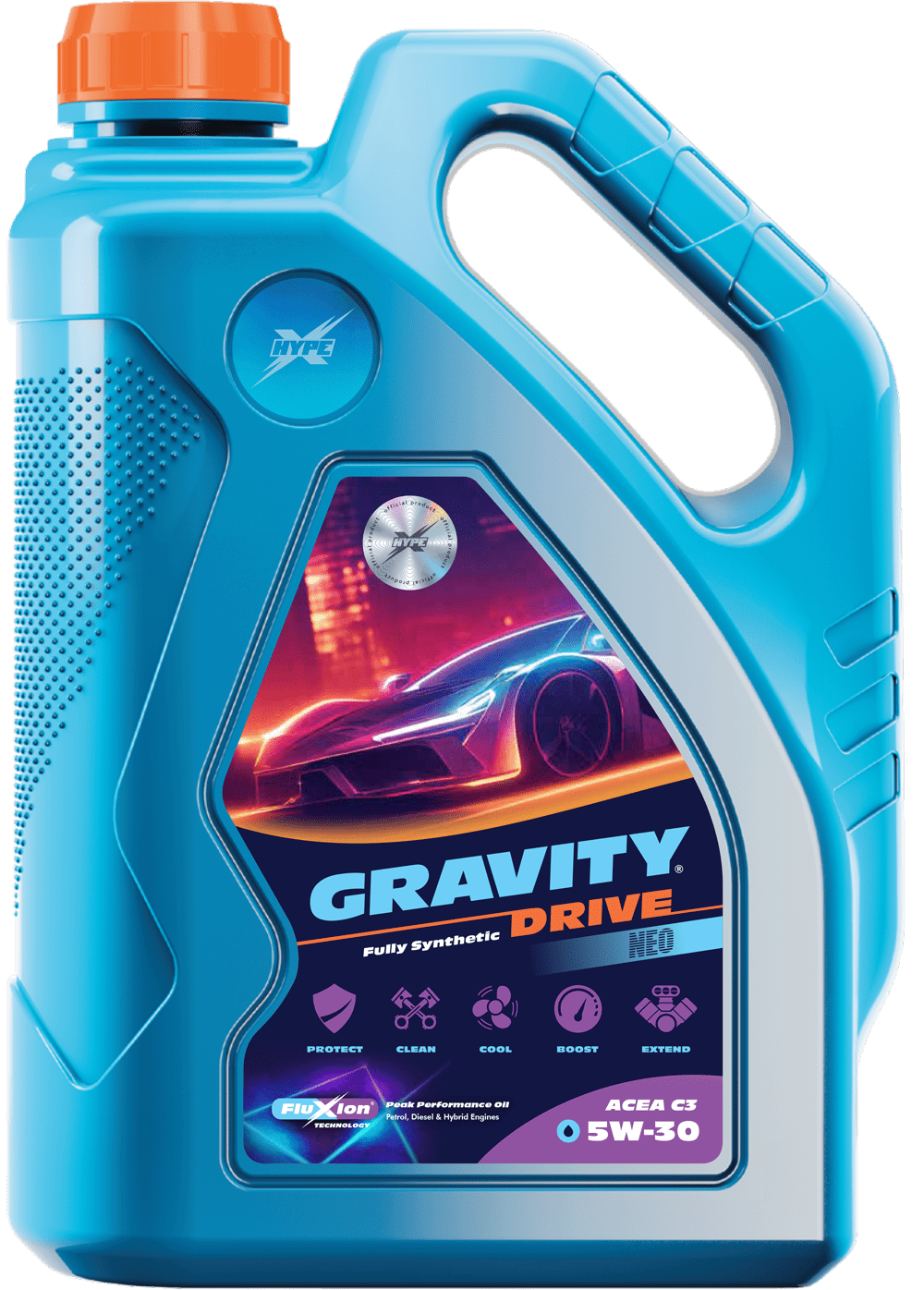Selecting the right engine oil for your motorcycle can be daunting due to the multitude of options available. Using the incorrect oil can lead to wasted money and potential damage to your bike. Unlike car engines, motorcycle engines require specific lubrication properties, making it essential to use oil formulated for motorcycles. This oil must lubricate both the engine and the gearbox and ensure the smooth operation of the wet clutch, which car oils cannot provide.
Products like XHYPE® Gravity® Ride MOTO 4T, designed specifically for motorcycles, offer the necessary features for optimal performance. Additionally, several other factors need consideration when choosing the right motorcycle engine oil. Should you opt for synthetic or mineral oil? What specifications are crucial? Let’s briefly explore these points.
Difference Between 4-Stroke and 2-Stroke Engine Oils
Motorcycle and scooter engines fall into two main categories: 4-stroke (4T) and 2-stroke (2T). The difference lies in the number of piston movements per cycle. A 4-stroke engine generates power every four strokes of the piston, while a 2-stroke engine generates power every two strokes. This difference necessitates different engine oils; 2-stroke engines require oil to be pre-mixed with fuel and burned during combustion, requiring specific oil properties. For 4-stroke engines, XHYPE® Gravity® Ride MOTO 4T provides superior lubrication and performance tailored to meet the unique demands of these engines.
Most modern motorcycles and scooters use 4-stroke engines due to their fuel efficiency and environmental benefits. In contrast, 2-stroke engines are common in smaller applications like lawn tools, go-karts, chainsaws, boat motors, and dirt bikes. 2-stroke engines have fewer moving parts, making them cheaper and lighter, with an excellent power-to-weight ratio. On the other hand, 4-stroke engines offer smooth and quiet operation with lower emissions of hydrocarbons (HC) and carbon monoxide (CO). XHYPE® Gravity® Ride MOTO 4T enhances these benefits by ensuring optimal engine performance and longevity.
Lubrication System Requirements
The lubrication system requirements for motorcycles can vary significantly based on the engine type (2-stroke or 4-stroke), motorcycle type, and usage patterns (e.g., city driving, high mileage, racing).
Scooters, often used in colder seasons more than motorcycles, need special oils that perform well at low temperatures. XHYPE® Gravity® Ride MOTO 4T is formulated to perform optimally in such conditions, minimising issues caused by frequent engine start-ups, shutdowns, and the stop-and-go conditions of urban driving.
For motorcycles with high mileage, the engine oil must offer excellent protection, low oil consumption, and good fuel economy. XHYPE® Gravity® Ride MOTO 4T meets these requirements, providing reliable performance even in high-mileage scenarios.
Racing motorcycles, operating at high power levels and extreme temperatures, require oil that can withstand severe thermo-oxidative conditions. Fully synthetic oils like XHYPE® Gravity® Ride MOTO 4T are ideal for this purpose. The oil must also facilitate smooth gear shifting and ensure easy wet clutch operation, both of which are ensured by XHYPE® Gravity® Ride MOTO 4T advanced formulation.
Dry Clutch vs. Wet Clutch
Wet clutches are located inside the crankcase, where engine oil lubricates the clutch components, providing cooler and quieter operation. However, this setup leads to faster contamination of the engine oil due to clutch dust. Automotive engine oils often contain friction-modifying additives that can cause motorcycle clutches to slip by interfering with the friction plates. XHYPE® Gravity® Ride MOTO 4T is designed to prevent such issues, ensuring reliable wet clutch performance.
In contrast, dry clutches operate without oil immersion, resulting in less drag and more power delivery to the rear wheel, along with cleaner engine oil. However, dry clutches receive less cooling, causing them to wear out faster and produce more noise. In competitive racing, such as MotoGP, the reduced drag of a dry clutch offers a slight performance advantage. Despite this, most motorcycles use wet clutches due to their durability and quieter operation. XHYPE® Gravity® Ride MOTO 4T provides the necessary lubrication for wet clutches, making it a preferred choice for many riders.
Mineral Engine Oils vs. Synthetic Oils
Synthetic lubricants offer superior performance over mineral oils, operating effectively across a broader temperature range and providing better oxidation stability, resulting in longer drain intervals. Synthetic oil, such as XHYPE® Gravity® Ride MOTO 4T, is recommended for racing and competition motorcycles, which operate at higher RPMs and temperatures compared to regular motorcycles. XHYPE® Gravity® Ride MOTO 4T ensures superior protection and performance, making it an ideal choice for any high-performance motorcycle.
Motorcycle Engine Oil Specifications
Beyond the type of oil, considering specifications, particularly from the Japanese Automotive Standard Organization (JASO), is crucial. The JASO MA qualification, for instance, signifies excellent performance with wet clutches. XHYPE® Gravity® Ride MOTO 4T exceeds all standards in these tests, ensuring optimal performance for your motorcycle.
Pinnacle 10W-40 Fully Synthetic Engine Oil
XHYPE® Gravity® Ride MOTO 4T a top-tier 10W-40, JASO MA2, fully synthetic 4-stroke engine oil, features cutting-edge low-friction FluXion® Ester Technology for enhanced power and torque. This oil is specifically designed for high-performance, high-revving 4-stroke and V-type engines, whether air-cooled or water-cooled, as well as scooters and ATVs.
Its robust formulation effectively addresses dilution challenges, including exposure to ethanol (E10, E85), methanol, nitromethane, cetane, octane boosters, and nitrous oxide.
XHYPE® Gravity® Ride MOTO 4T is tailored for engine/transmission lubrication systems, ensuring consistent clutch feel and optimal launch coefficients. It’s the ultimate 4-stroke performance engine oil for riders seeking to maximise their motorcycle’s potential.
